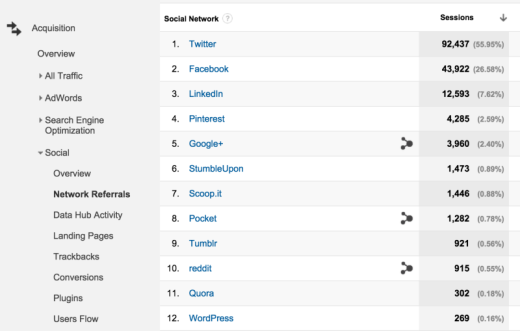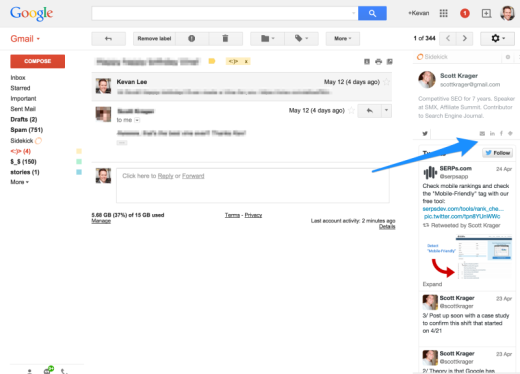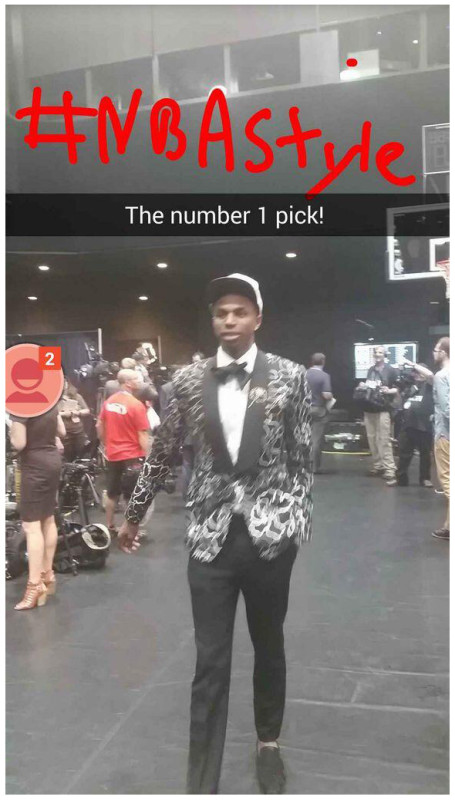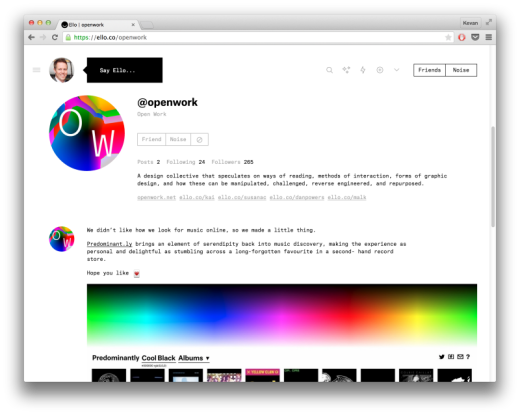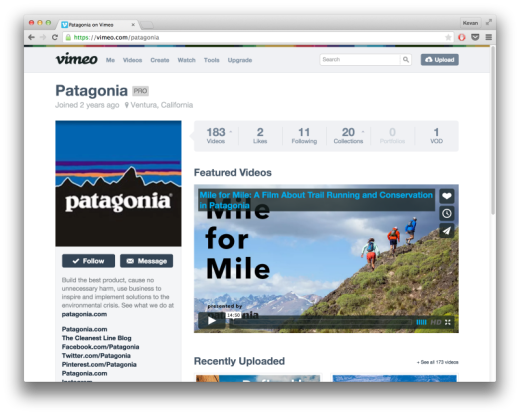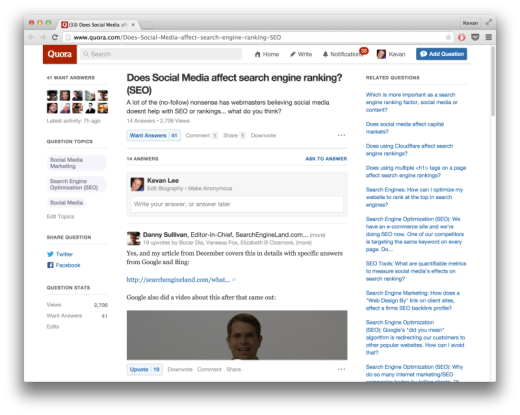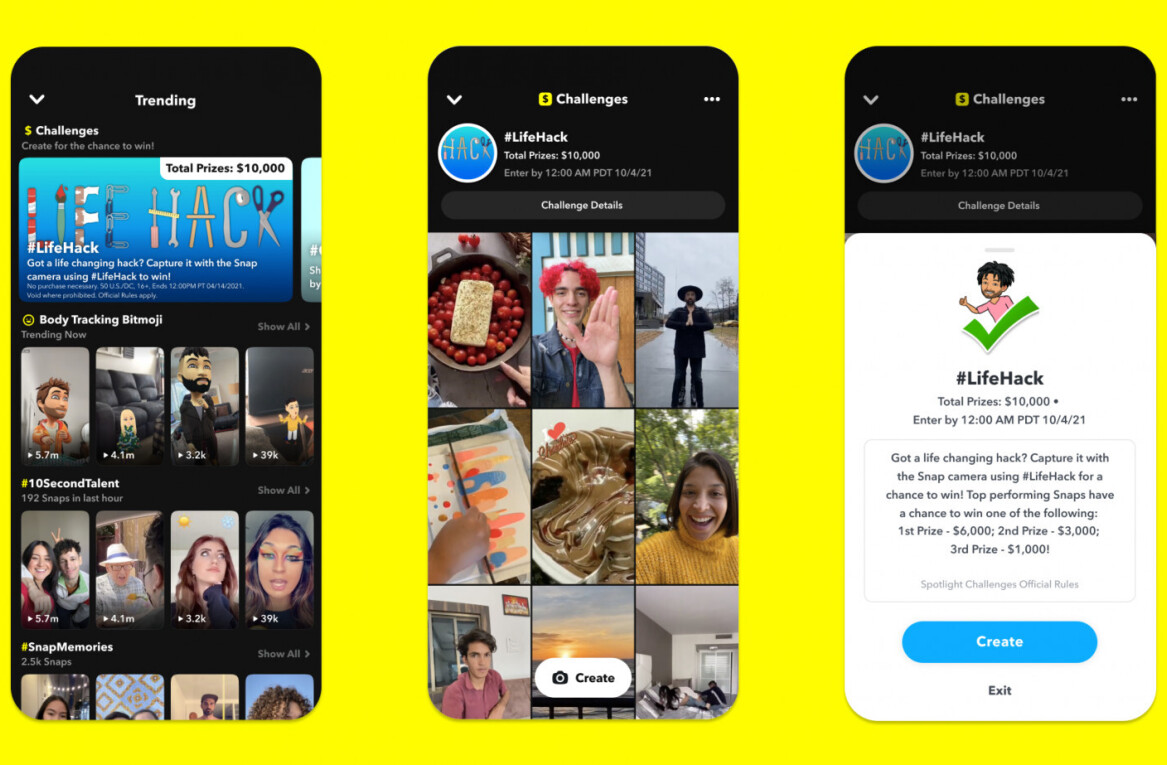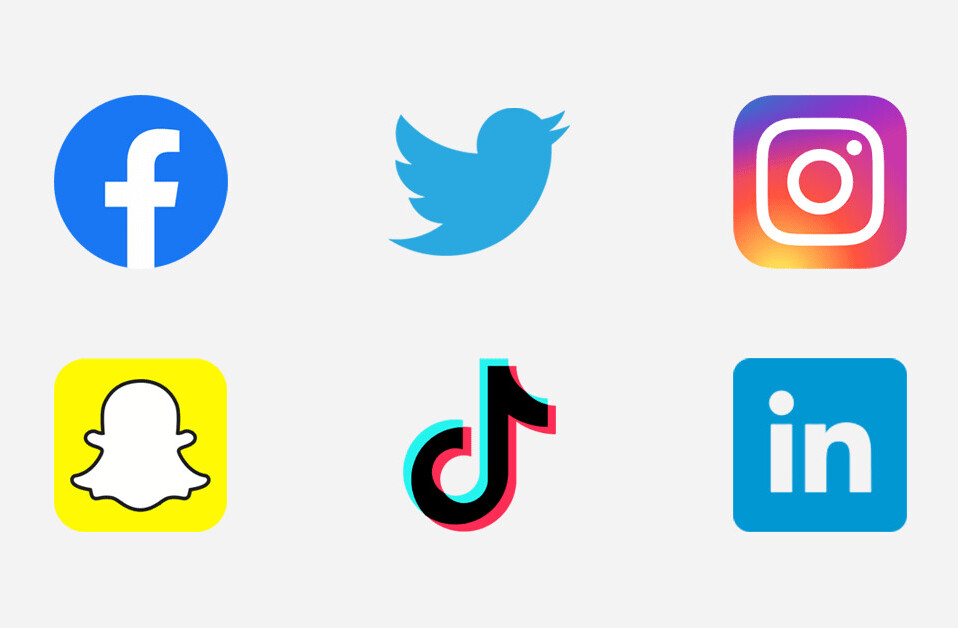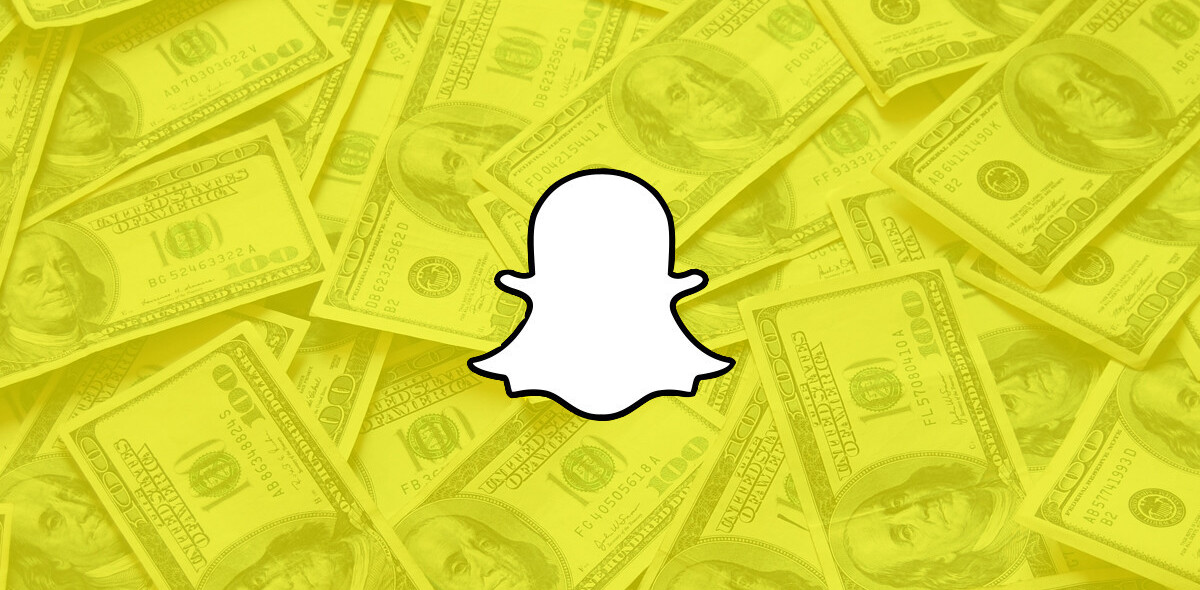
There are a stunning amount of social networks out there, offering some inventive, engaging ways for people to connect and share with one another.
Which ones should you be on?
Beyond the big six networks—Facebook, Twitter, LinkedIn, Google+, Instagram, and Pinterest—there are dozens more that are quickly rising in usage or are super valuable for particular audiences and niches. It’s a ton to keep track of. It can be a mystery to know where to spend your time.
I pulled up some numbers on these fringe networks to maybe help you decide where it’s best to spend your time. Here are the explanations, demographics, numbers, and details on 11 fringe social networks.
Overall tips for choosing a social network
Some of the best advice I’ve heard on social media marketing is this: You should choose the social networks that best fit your strategy and the goals you want to achieve on social media.
In other words, you don’t have to be on them all—just the ones that matter to you and your audience.
So how exactly do you choose the best social networks? Here are a few factors that we think might fit into this discussion.
- Time – How much time can you devote to a social network? Plan on at least an hour per day per social network, at least at the start. (Once you get going, tools like Buffer can help you save a bit of time.)
- Resources – What personnel and skills do you have to work with? Visual social networks like Pinterest and Instagram require images and photos. Social networks like Google+ emphasize quality content. Do you have the resources to create what’s needed?
- Knowledge – What will be the learning curve for you for a given social network? Are there ones you’re quite familiar with already? Getting up to speed might be a factor to consider here.
- Your audience – Where do your potential customers hang out? Which social network has the right demographics?
This last one is likely to be quite important as you consider the social networks beyond the big six of Facebook, Twitter, LinkedIn, Google+, Pinterest, and Instagram. If your audience is spending its time on a fringe social network, that might make it all the more appealing for you to be there, too.
How to tell if your audience is on a certain social network
To determine where your audience hangs out on social media, you can look for a number of different signals. One of the most important ones in my mind would be intuition. Do you hear about a certain social network quite often? If so, it’s likely because those you are close to—your audience, in most cases—is talking about it.
Beyond intuition, here are some specific signals that could lead you to decide where your audience is hanging out.
1. Check the referral traffic from social to your website
In your Google Analytics reports, you can drill down to Acquisition > Social > Network Referrals and see all the traffic that has come to your site from the many different social networks.
Does a certain network seem to send you a bunch of traffic?
That could be a signal that a portion of your audience hangs out there.
(In the example above for the Buffer stats, it might be worth our exploring a bit into Reddit, Tumblr, or StumbleUpon as they both tend to send us a good bit of traffic.)
2. Notice the social networks of the people who email you
If you run your small business or manage your brand through your inbox, you’re likely to receive a lot of email from your audience.
And there’re some cool tools that help provide extra insights into your email contacts, particularly the social networks they all belong to.
The screengrab above is from Sidekick, and you can see clearly which social networks this person belongs to. As you flip through more and more of your contacts as they email you, it’s possible that you might be able to pick up on some trending new social networks where your audience may be heading.
Here is a list of possible contacts tools to check out:
3. Study the demographics of the networks
You’ve likely got a great idea of the makeup of your audience—things like age, gender, interests, and the like. If you can match this to some of the up-and-coming social networks, you may be able to spot opportunities to connect.
Demographic information tends to come out sporadically, when a website performs a study or a social network makes a public announcement.
My favorite places to check for these insights are:
I’ve done my best to include some key demographics for each of the social networks listed below.
Our best tip: Reserve your username everywhere
I still think it’s great advice to pick and choose the social networks that suit you best.
At the same time, go ahead and reserve your username on every social network, even if you’re not sure you’ll ever spend time there.
Doing so helps keep these spots on hold for you if your strategy change or a network gets quite popular. It also helps protect your brand from others who may impersonate you or establish a voice and tone you’d rather they not.
To find out which spots still have your username available, you can use a tool like Knowem, which checks the major 25 social networks (or up to 500 if you’d like) to see what’s available.
Here’s what I found with a search for ‘kevanlee.’
1. Should your brand be on Snapchat?
- What it is: Snapchat is a text-, photo- and video-messaging app that you use to send messages that will disappear one to ten seconds after your friend receives them.
- Monthly active users: 200 million
- Demographics: 70 percent women, and 71 percent under 25 years old
(source)
Snapchat is one of the fastest-growing social networks, especially among the 25-and-under crowd. There’s a lot to like for young people—the network is new enough that it’s yet to see large adoption from parents or too many brands, and the temporary nature of the content is appealing to many.
Which isn’t to say that businesses can’t succeed on Snapchat. Though the content disappears after a short time, it’s not all that different than a tweet or Facebook post getting swept away in the large volume of content on those networks. Users can screenshot what they like, too, allowing some content to live on elsewhere. And Snapchat itself has encouraged brand involvement with the release of Snapchat Discover, a story tool for editorial brands.
One of the fun ways that brands have found to use Snapchat is to annotate the images with drawings and doodles. Here’s an example from the NBA.
Recommended for: Those who focus on a young audience, 25 and under.
2. Should your brand be on Ello?
- What it is: Ello is an ad-free alternative to existing social networks like Facebook or Twitter (with many of the same features)
- Total users: Over 1 million
- Monthly active users: Unknown
- Main demographics: 63 percent men, and unknown for age
Launched in 2014, Ello picked up a huge amount of press and momentum in September, as it was referred to as the anti-Facebook and its invite-only nature caused a bit of a scramble. Growth has slowed since, though the Ello team continues to roll out new features and improvements.
(The network remains invite-only, too. If you’d like an invite, I’m fortunate to have a couple extras on hand that I’d love to pass along.)
On Ello, you can post content just as you would on other social networks, sharing text updates, links, video, or photos/GIFs. Users can reshare and comment on your posts.
Recommended for: Those who greatly value privacy. Those with an audience of early adopters, outsiders, or unique individuals.
3. Should your brand be on Vine?
- What it is: Vine is a short-form video sharing service, built by Twitter, where you can create and share 6-second videos filmed on mobile devices
- Total users: 40 million
- Monthly active users: Unknown
- Main demographics: 57 percent women, most popular among 18-to-20-year-olds
The connection between Twitter and Vine is tight. Vine videos can be shared easily to Twitter, and they embed quite smoothly right into a Twitter stream. The audiences that seem most primed to consume Vines would be those who spend time on Twitter or Tumblr, two of the best short-form networks out there.
Brands have found some creative ways to put Vine video to use, coming up with smart how-to videos and short films. One of the best examples that comes to mind is this fun video from Dunkin Donuts, reimagining a highlight from that night’s NFL game.
More fun examples here.
Recommended for: Those with a large following on Twitter, or those whose content fits a six-second format well (how to videos, comedy, memes).
4. Should your brand be on Reddit?
- What it is: Reddit is a user-generated website where the content is submitted and voted up by the community
- Monthly active users: 169 million
- Main demographics: 18-to-29-year-old males
(source)
The Reddit community is one of the most passionate, well-informed places on the web, which can be particularly useful if your niche has an active thread there.
Topics are divided into subreddits where users submit the best and latest links, stories, and visuals. It’s a great place to turn for content ideas or to keep up with the newest, pre-viral info. And it’s also a great place to hop in and be involved, to build a bit of expertise and some connections with those who share a passion for your topic.
Reddit is for individuals, so you’d join as yourself and not your brand. Some of our favorite subreddits include:
- R/Socialmedia
- R/Bigseo
- R/Advertising
- R/Design
- R/ContentCreation
- R/Infographics
- R/InternetIsBeautiful
- R/TrueReddit
- R/FoodForThought
Recommended for: Individuals with a passion for a niche and a community.
5. Should your brand be on Tumblr?
- What it is: Tumblr is a microblogging platform where users can post text or multimedia—images, GIFs, video—to a short-form blog
- Total users: 420 million
- Monthly active users: 230 million
- Main demographics: 50 percent of users are between age 18 and 34
Tumblr seems to add a lot of value for people who enjoy sharing fast, quick snippets of what they find interesting or amusing. Brands, too, can find value in the short-form nature of Tumblr as its quite easy to quickly publish any small thing—a quote, a photo, a video—that comes to mind.
In some ways, you can use Tumblr as a WordPress alternative, if you’re interested in a fast and simple way to set up and maintain a blog. It’s not as robust as WordPress, which some people appreciate. On Tumblr, people can follow your blog so that your posts are added automatically to their Tumblr dashboards, and Tumblr users can like or repost any of the content on your page.
A great example that comes to mind is Penguin Random House, which shares all sort of fun, short-form book posts.
Recommended for: Highly visual brands. Those with a young audience or whose content lends itself well to images, GIFs, video. Those who have enough unique short-form content to support a Tumblr blog in addition to a main blog.
6. Should your brand be on YouTube?
- What it is: YouTube is a video-sharing website
- Total users: 1 billion
- Monthly active viewers: 1 billion+
- Main demographics: Men and women age 25 to 34
If you’ve ever thought of doing video content for your brand, you’ve probably considered YouTube. As the number one place for hosted video, YouTube is the first choice for getting your video seen by people and embedded into your website.
Recommended for: Any brand with video (Wistia’s tools are a great alternative as well).
7. Should your brand be on Vimeo?
- What it is: Vimeo is a video-sharing website with a vibrant community of filmmakers and video professionals
- Total users: 100 million
- Monthly active viewers: 170 million
- Main demographics: Unknown
Very similar to YouTube in almost every way—social sharing, embedding on a website—Vimeo has carved out a bit of a niche for itself due to its smooth and clean interface. Whereas YouTube is well-optimized to help you find lots of great stuff to watch on YouTube, Vimeo is a bit more focused on the viewing experience itself, which leads to its popular use among professional video makers.
Patagonia has a great presence on Vimeo, where they share some of their wonderfully-produced videos.
Recommended for: Filmmakers and video professionals. Those with big, beautiful HD videos and audiences who care deeply about user experience.
8. Should your brand be on Soundcloud?
- What it is: Soundcloud is an audio-sharing website where users can distribute their audio—podcasts, music, etc.—across the web
- Total users: 10 million
- Monthly active listeners: 175 million
- Main demographics: Unknown
(source)
Soundcloud has become one of the most popular ways to embed audio into your website and blog posts. It’s a great option for podcasters and musicians who can share their bits of audio super easily right on their website.
At the Soundcloud site, users can follow the accounts they choose, as well as repost and like any particular bits of audio. Another unique characteristic of Soundcloud—and one that made the network quite unique early on—is that you can add a comment to someone’s audio at any particular time during the playback so that your comment is attached to a certain timestamp.
Lots of my favorite podcasts are hosted on Soundcloud. A favorite example is Jason Zook and Paul Jarvis’s Invisible Office Hours.
Recommended for: Podcasters, music brands.
9. Should your brand be on Yelp?
- What it is: Yelp is a website for crowdsourced reviews of local businesses, including restaurants and shops
- Monthly Yelp visitors: 142 million
(source)
You can join Yelp as a reviewer and share your thoughts on the businesses that you visit. Likely a more useful way for marketers to get involved in Yelp is byclaiming your Yelp business page. Doing so allows you to respond to comments as the owner of the business and to see the stats on visitor activity on your Yelp page.
Recommended for: Brick-and-mortar businesses
10. Should your brand be on Foursquare?
- What it is: Foursquare is a mobile, local discovery app that allows users to search for recommended restaurants, shops, and businesses that are near their location
- Total users: 55 million
(source)
Like Yelp, you can use Foursquare as an individual to find places to eat and shop and to leave reviews. And you can also join as a business where you’ll be able to add some extra detail to your business’s Foursquare page, as well as reply to comments and check the stats.
Recommended for: Brick-and-mortar businesses
11. Should your brand be on Quora?
- What it is: Quora is a question-and-answer website where the questions and answers all come from the community
- Monthly active users: 2.9 million
- Main demographics: Unknown
(source)
Lots of great conversations happen on Quora, and it’s quite easy to get involved yourself on questions that involve your brand or your industry. Sharing expertise is a great way to be active on Quora. You can also write content directly into Quora’s publishing tools, which is a neat way to repurpose existing blog posts or articles.
We’ve found Quora to be particular useful when questions surface about Buffer’s history or culture. Joel or Leo can hop in directly and contribute their expertise to the thread. And we can monitor topics and keywords to stay aware of when these conversations occur.
Recommended for: Individuals who would like to contribute to the conversation about their niche or brand.
Over to you
Which of the fringe social networks do you visit? Are there any in particular where you’ve found great traction or interest from your audience?
I’d love to hear about the networks that are significant for you and your brand. And I’d love to hear if you think Buffer should hop onto any of these up-and-coming spots!
Feel free to share any and all thoughts here in the comments.
Read Next: How to spend just $100 on a social media budget
Image sources: Pablo, The Noun Project, UnSplash, Shutterstock
This post first appeared on Buffer
Get the TNW newsletter
Get the most important tech news in your inbox each week.

